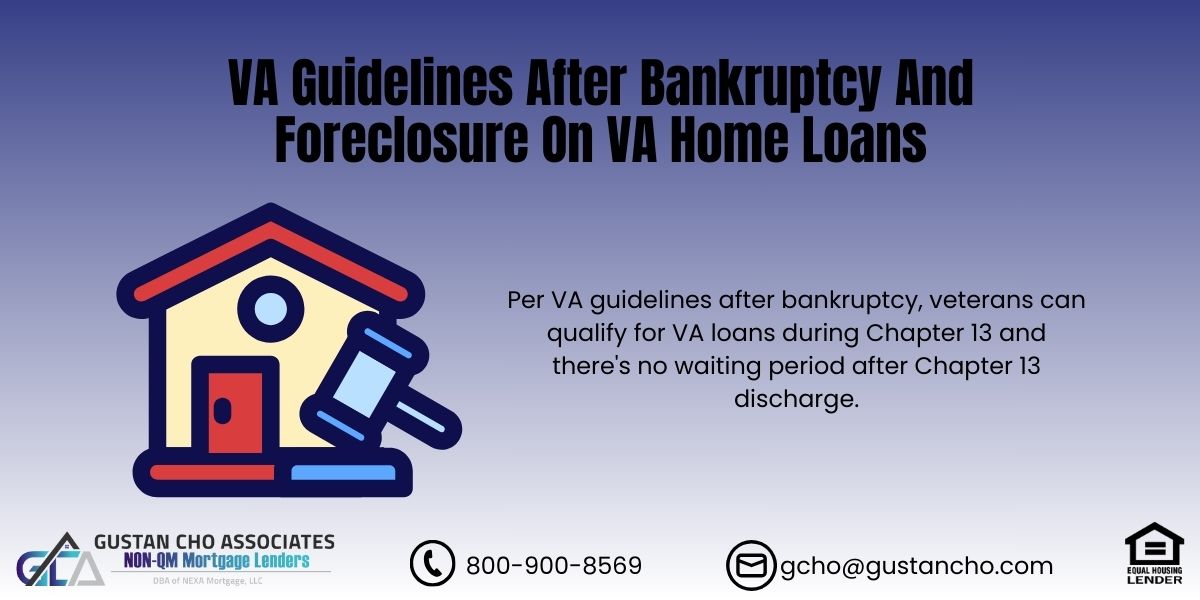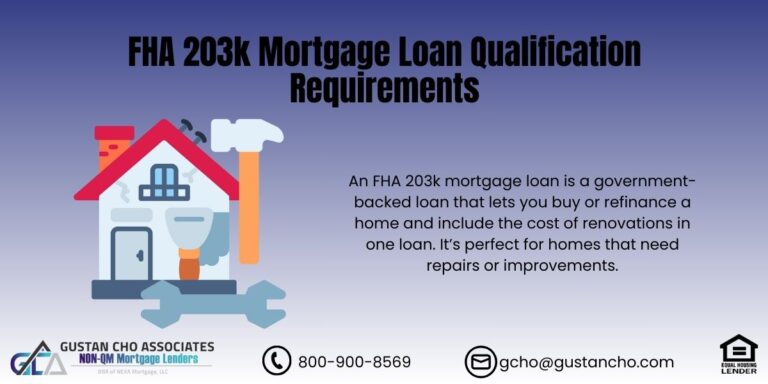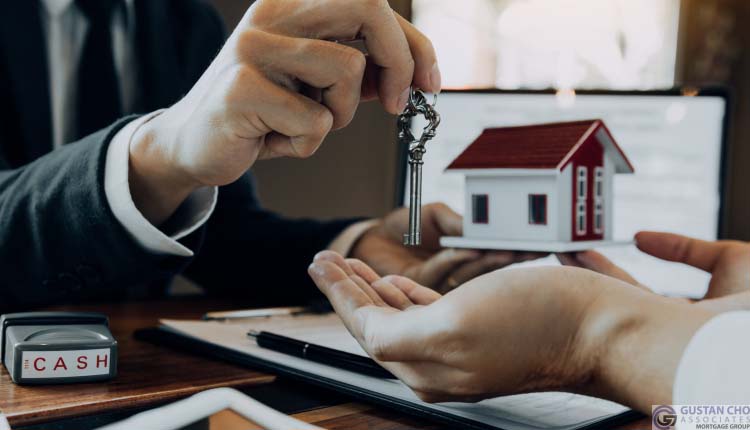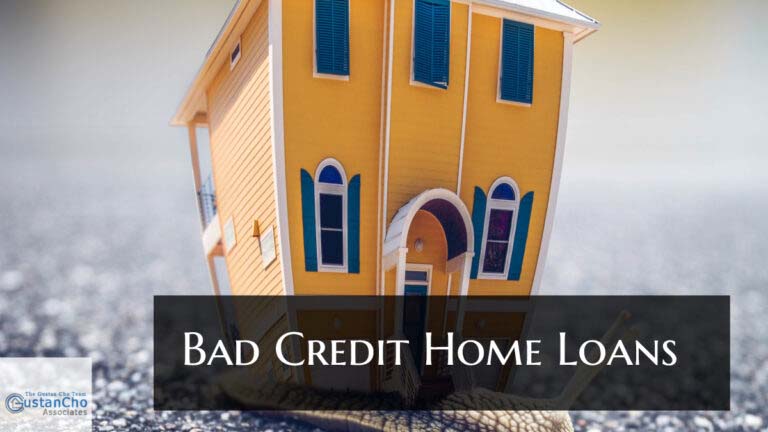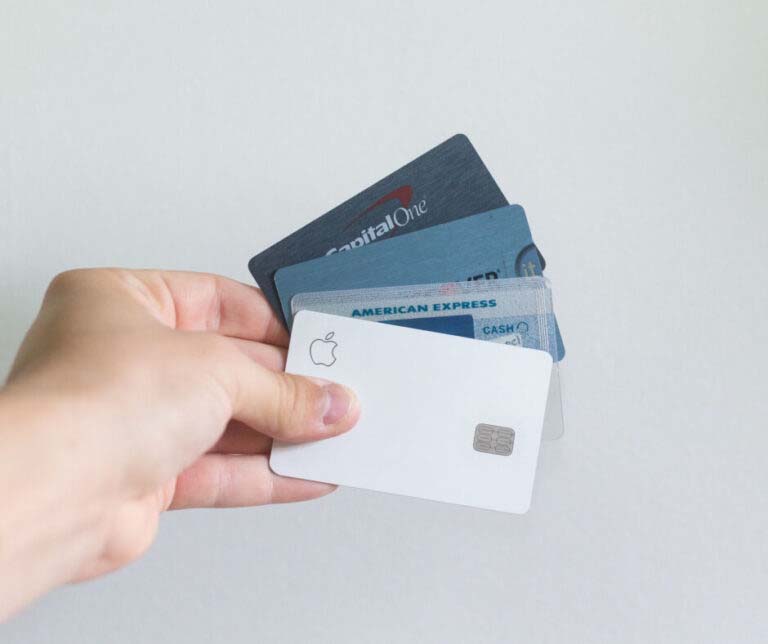VA Guidelines After Bankruptcy And Foreclosure On VA Home Loans
VA Guidelines After Bankruptcy: Qualifying for a VA Loan in 2024
If you’ve experienced bankruptcy, don’t give up on your dream of homeownership. The VA loan program offers one of the most flexible and forgiving paths to homeownership, even after financial setbacks like bankruptcy or foreclosure.
For veterans and active-duty service members, the VA loan is structured to assist in purchasing or refinancing a home with favorable terms.
The guide updated in 2024 will help you understand the VA rules after bankruptcy and explain how to qualify for a VA loan despite having a negative impact on your credit. We will address the waiting periods and necessary documentation and provide expert advice on improving your credit and regaining financial stability after bankruptcy. Let’s begin!
Why Choose a VA Loan After Bankruptcy?
VA loans are among the best mortgage options available for veterans and active-duty military personnel, even if you’ve had a bankruptcy or foreclosure. Here’s why VA loans stand out:
- No down payment is required in most cases
- No private mortgage insurance (PMI)
- Lenient credit requirements compared to conventional loans
- Lower interest rates
- 100% financing options
- No maximum loan limits
Even if you’ve experienced a financial hardship, VA loans can help you become a homeowner again.
Waiting Periods for VA Loans After Bankruptcy
One of the most important questions after filing for bankruptcy is: How long do I have to wait to get another mortgage? Good news! VA guidelines after bankruptcy offer shorter waiting periods than other loan types.
Chapter 7 Bankruptcy
After submitting a Chapter 7 bankruptcy filing, you must wait two years following the discharge in order to qualify for a VA loan. The waiting period for VA loans is shorter compared to conventional loans, which usually mandate a four-year waiting period.
Chapter 13 Bankruptcy
If you’re in a Chapter 13 bankruptcy repayment plan, the VA allows you to qualify for a loan one year into your repayment plan as long as you’ve made 12 months of on-time payments. You don’t need to have your bankruptcy discharged yet, but you’ll need approval from the bankruptcy trustee.
VA Guidelines During Chapter 13 Bankruptcy
 VA loans differ from most other types of loans because they allow you to qualify for a home loan even if you are in a Chapter 13 bankruptcy repayment plan. Here’s how it works:
VA loans differ from most other types of loans because they allow you to qualify for a home loan even if you are in a Chapter 13 bankruptcy repayment plan. Here’s how it works:
- The trustee requires you to have made 12 consecutive on-time payments.
- Your bankruptcy trustee must approve the new mortgage.
- You must provide documentation of your income stability.
Veterans still repaying their Chapter 13 bankruptcy can benefit from manual underwriting, which allows for flexibility on issues like a high debt-to-income ratio (DTI). While most lenders cap the DTI at around 43-50%, VA loans can go higher, even up to 60% or more, if you have strong residual income.
Re-Establishing Credit After Bankruptcy for VA Loans
Your credit score will be negatively impacted after a bankruptcy. However, this doesn’t mean that you will have poor credit indefinitely. In reality, you can begin the process of rebuilding your credit immediately.
Below are some suggestions for enhancing your credit score and improving your likelihood of being eligible for a VA loan:
- Get secured credit cards: Apply for 3-5 secured credit cards, each with a minimum limit of $500. Use these cards responsibly by maintaining low balances and paying them off in full every month.
- Avoid late payments: A single delayed payment can cause a substantial decrease in your credit score and will remain on your credit report for seven years.
- Monitor your credit regularly: Use free tools like Credit Karma to monitor your progress.
With consistent effort, it’s possible to boost your credit score by 100 points or more in just one year after bankruptcy. Many borrowers who follow these steps report credit scores in the mid-600s to 700s within a year after Chapter 7 or Chapter 13 bankruptcy.
VA Loan After Foreclosure: How Long Do I Have to Wait?
A foreclosure can feel like the end of the road, but it doesn’t have to stop you from buying another home. Just like with bankruptcy, the VA has specific guidelines for getting a VA loan after foreclosure:
- Two-year waiting period after foreclosure, deed-in-lieu of foreclosure, or short sale
- The VA has no minimum credit score requirements, but most lenders prefer to see a score of 580 or higher.
Remember, even if your VA loan ended in foreclosure, you can still use your remaining entitlement to get a new one.
What’s New for 2024? Updated VA Guidelines After Bankruptcy
In 2024, VA guidelines remain one of the most borrower-friendly options for veterans and active military members. Here are some updates and reminders for the new year:
- No credit score minimum: While most lenders require a score of at least 580, the VA has no minimum credit score requirement. Some lenders may approve loans with scores as low as 500 if you meet other qualifications.
- No debt-to-income cap: VA loans don’t set a maximum DTI ratio. However, most lenders prefer your DTI to stay below 60%. If your DTI exceeds that, you’ll need compensating factors like high residual income.
- Flexible manual underwriting: Even if you can’t get approved through automated underwriting, manual underwriting can help you qualify for a VA loan with a higher DTI or lower credit score.
The VA’s lenient guidelines and flexibility after bankruptcy make it one of the best loan programs for those looking to rebuild after financial difficulties.
How Does Bankruptcy Affect Your VA Loan Interest Rate?
Many believe that having a bankruptcy on their record means they’ll have to pay a higher interest rate on their next mortgage. However, that’s not always the case with VA loans. While your credit score does affect your interest rate, having a past bankruptcy or foreclosure doesn’t automatically mean you’ll get a higher rate.
The VA offers lower interest rates than conventional loans, even for those with recent bankruptcies. With a solid credit recovery plan, you can still secure competitive rates using your VA loan benefit.
VA Guidelines on Residual Income: Why It Matters
Residual income is a significant factor in qualifying for a VA loan. It is the monthly money after paying your mortgage, debts, and other expenses. The VA uses this to determine whether you have enough financial cushion to support a mortgage.
Here’s how residual income works:
- The VA mandates a minimum residual income based on the size of your family and where you live.
- After reviewing your paystubs, tax returns, and debt obligations, lenders will calculate your residual income.
Strong residual income can help offset issues like low credit scores or high DTI ratios, making it easier to qualify for a loan even after bankruptcy.
Manual Underwriting for VA Loans After Bankruptcy
If you don’t meet the requirements for automated underwriting, manual underwriting may be the key to getting approved for a VA loan. Manual underwriting involves a more in-depth review of your financial situation. While it requires more documentation, it offers flexibility for veterans with recent bankruptcies, foreclosures, or low credit scores.
With manual underwriting, you can still qualify with:
- Debt-to-income ratios over 60%
- Credit scores as low as 500
- Recent bankruptcy or foreclosure
As long as you can show a stable and solid residual income, you have a good chance of getting approved through manual underwriting.
VA Guidelines on Waiting Periods After Foreclosure
After experiencing a foreclosure, the VA requires a two-year waiting period before eligibility for another VA loan. This is significantly shorter than the waiting period for conventional loans, typically seven years. Plus, the VA loan program will make your interest rates competitive, even after a foreclosure.
Frequently Asked Questions About VA Guidelines After Bankruptcy:
Q: How Long Must I Wait to Get a VA Loan After Bankruptcy?
A: According to the VA guidelines after bankruptcy, you must wait two years after a Chapter 7 bankruptcy discharge. If you’re in a Chapter 13 repayment plan, you can apply after one year of on-time payments.
Q: Can I Qualify for a VA Loan While Still in Chapter 13 Bankruptcy?
A: Yes, the VA guidelines after bankruptcy allow veterans to qualify while still in a Chapter 13 repayment plan, as long as you’ve made at least 12 months of on-time payments and have approval from the bankruptcy trustee.
Q: Do I Need a Minimum Credit Score for a VA Loan After Bankruptcy?
A: The VA guidelines after bankruptcy don’t require a minimum credit score. However, many lenders prefer a score of 580 or higher, but some may approve loans with scores as low as 500.
Q: Will Bankruptcy Affect My VA Loan Interest Rate?
A: Having a bankruptcy won’t automatically increase your VA loan interest rate. The VA offers competitive rates even for those with past bankruptcies. Your credit score typically affects the rate, not the bankruptcy itself.
Q: What is the Waiting Period for a VA Loan After Foreclosure?
A: The VA guidelines after bankruptcy and foreclosure state that you must wait two years after a foreclosure, deed-in-lieu of foreclosure, or short sale before you can qualify for another VA loan.
Q: Can I Use a VA Loan Again if My Previous VA Loan Ended Up Being in Foreclosure?
A: Yes, you can use your remaining entitlement to get a new VA loan even if your previous one ended in foreclosure, as long as you meet the VA guidelines after bankruptcy and foreclosure.
Q: How Can I Rebuild My Credit After Bankruptcy to Qualify for a VA Loan?
A: Begin by obtaining secured credit cards, making timely payments, and maintaining low balances. Following the VA guidelines after bankruptcy, rebuilding credit can raise your score by 100 points or more within a year.
Q: What Happens if My Debt-to-Income Ratio is High After Bankruptcy?
A: VA loans are flexible, and according to VA guidelines, after bankruptcy, you can qualify with a high debt-to-income ratio, even over 60%, if you have strong residual income.
Q: What is Residual Income, and Why is it Important for VA Loans?
A: Residual income is the money left over each month after paying your mortgage and other bills. VA guidelines after bankruptcy use residual income to ensure you have enough financial cushion to support a new mortgage.
Q: What if I Don’t Qualify Through Automated Underwriting After Bankruptcy?
A: If you can’t get approved through automated underwriting, the VA guidelines after bankruptcy allow for manual underwriting, which examines your finances more closely and offers more flexibility.
Conclusion: Ready to Buy or Refinance After Bankruptcy? VA Loans Make It Possible
Bankruptcy doesn’t have to mean the end of your dream of owning a home. With the VA loan program, veterans and active-duty military members have access to one of the most flexible and forgiving mortgage options available. Whether you’re looking to buy your first home or refinance after a financial setback, VA loans make homeownership within reach again.
In 2024, VA guidelines after bankruptcy remain incredibly borrower-friendly. You can qualify for a VA loan just two years after Chapter 7 or even one year into a Chapter 13 repayment plan. Plus, there are no down payment requirements, no PMI, and lenient credit guidelines.
Borrowers who need a five-star national mortgage company licensed in 48 states with no overlays, please contact Non-QM Mortgage Lenders at 800-900-8569 or text us for a faster response. Or email us at gcho@gustancho.com.
This blog about “VA Guidelines After Bankruptcy And Foreclosure On VA Home Loans” was updated on October 3rd, 2024.

